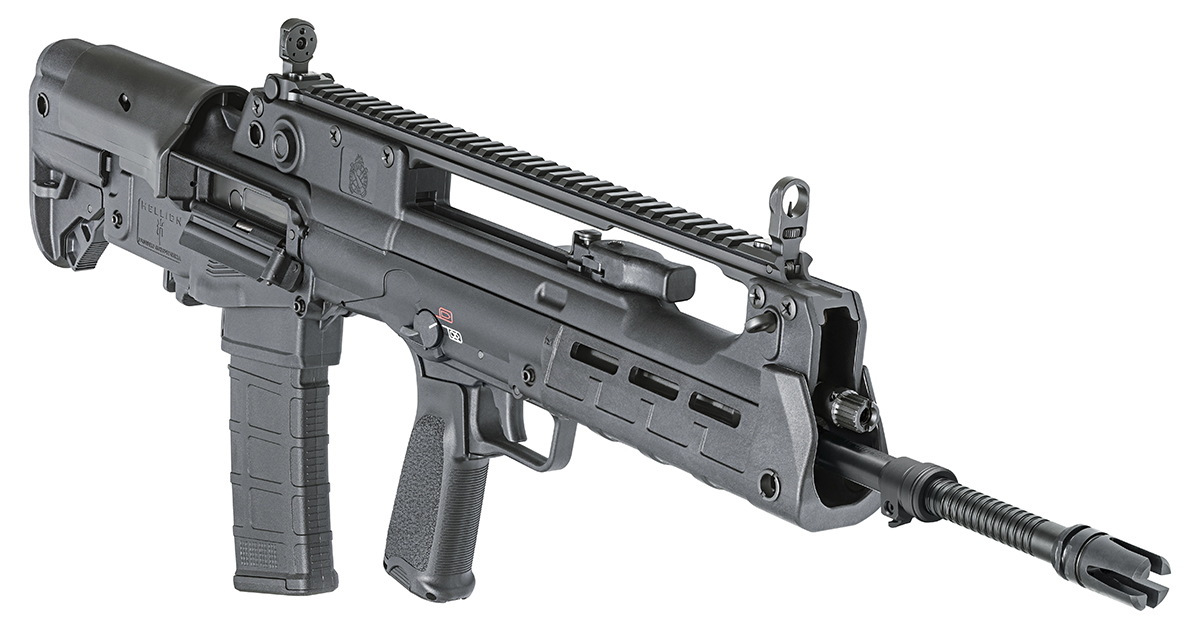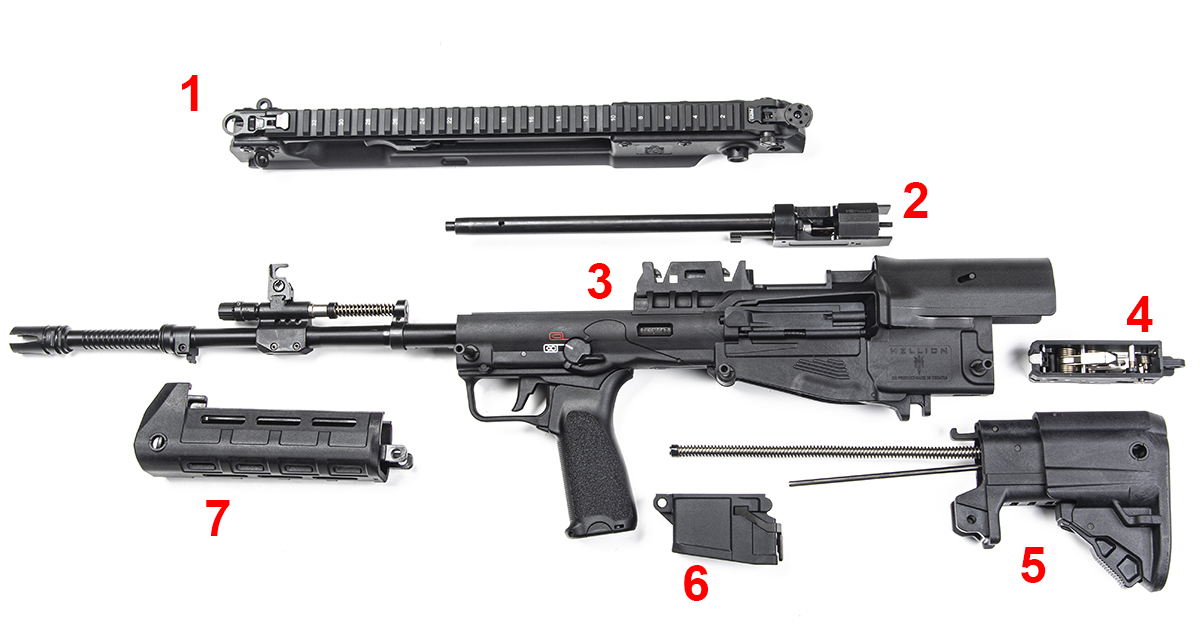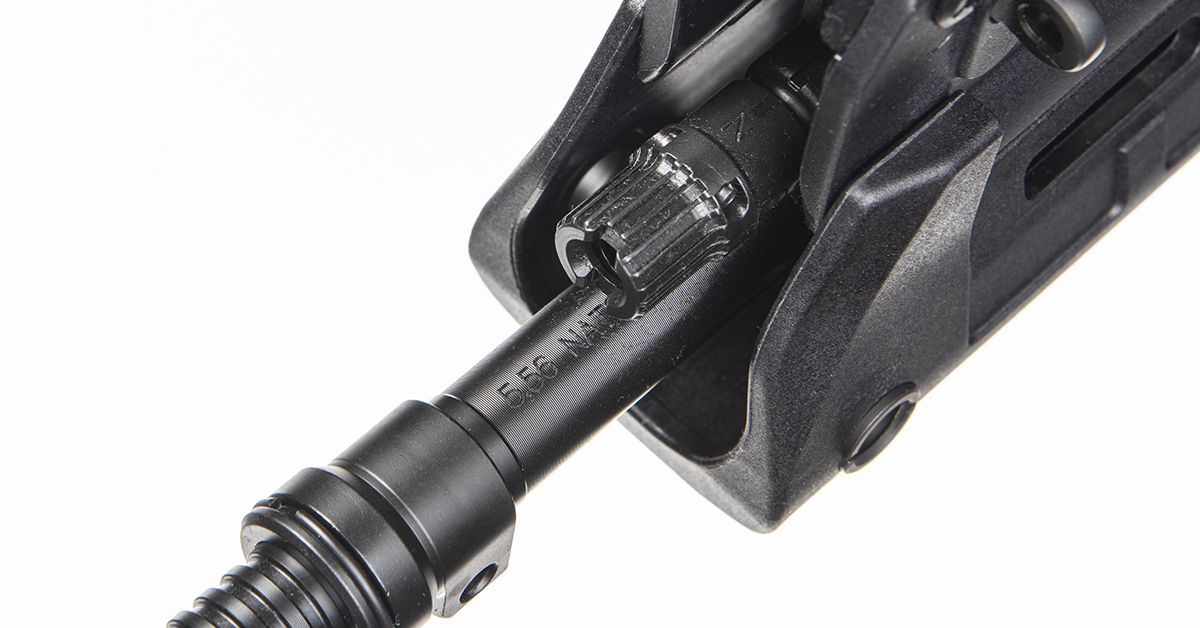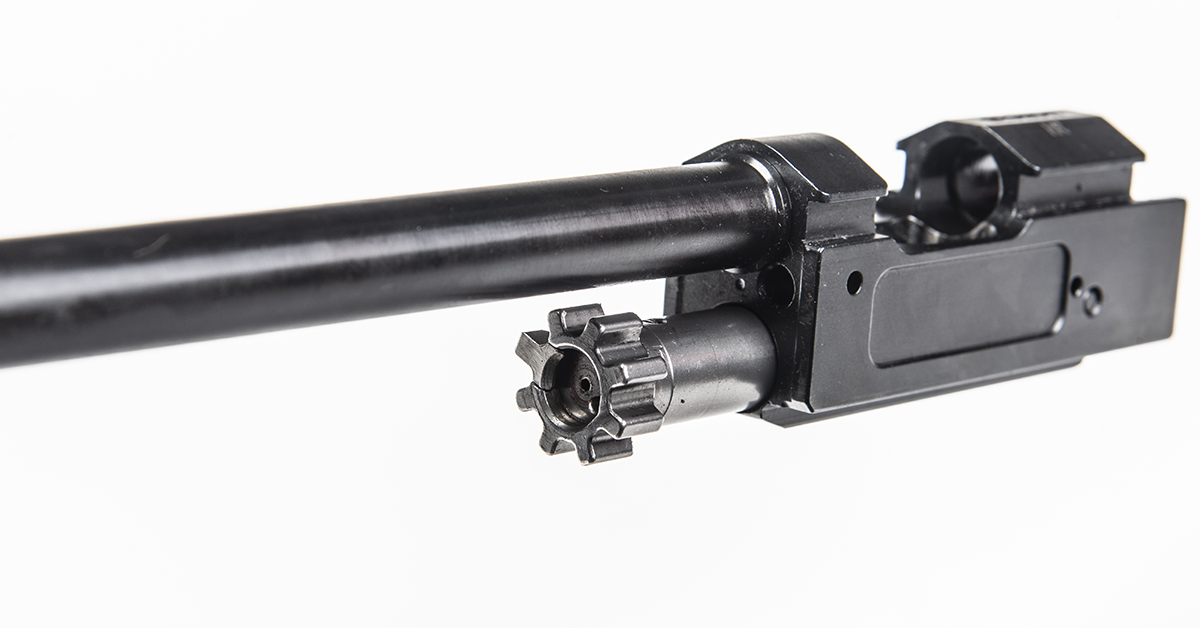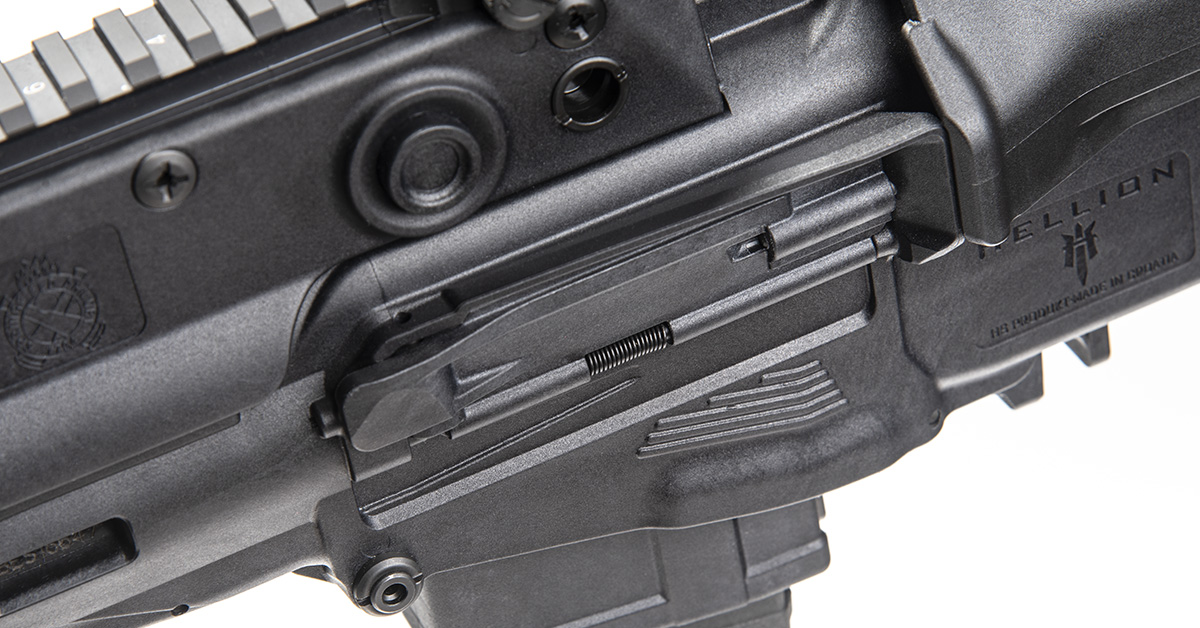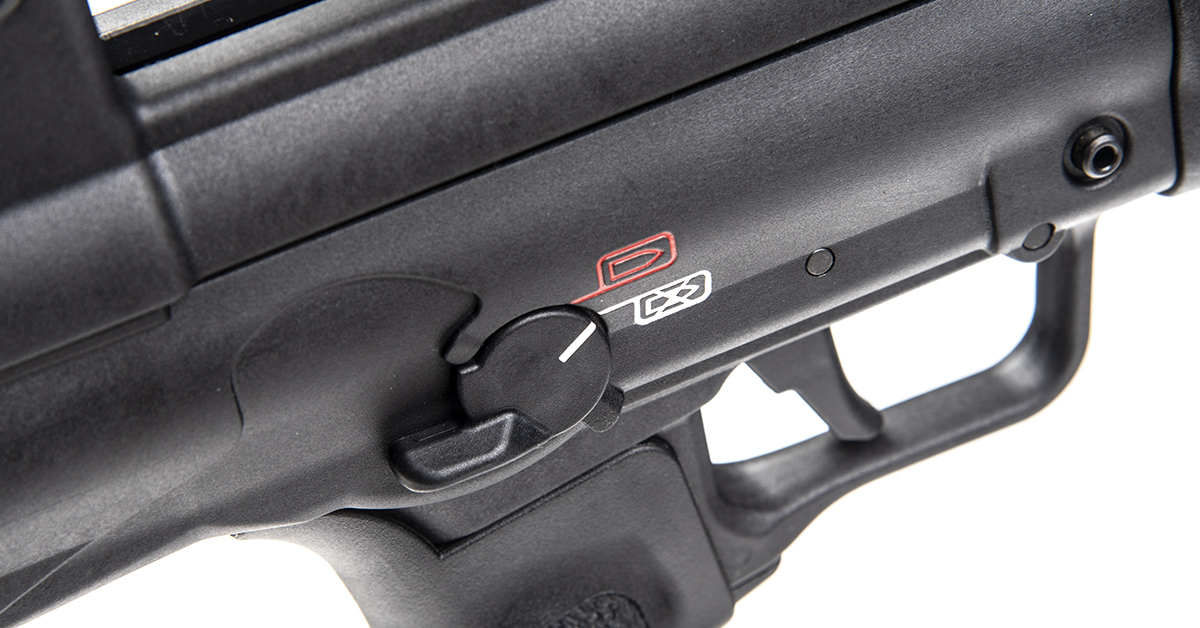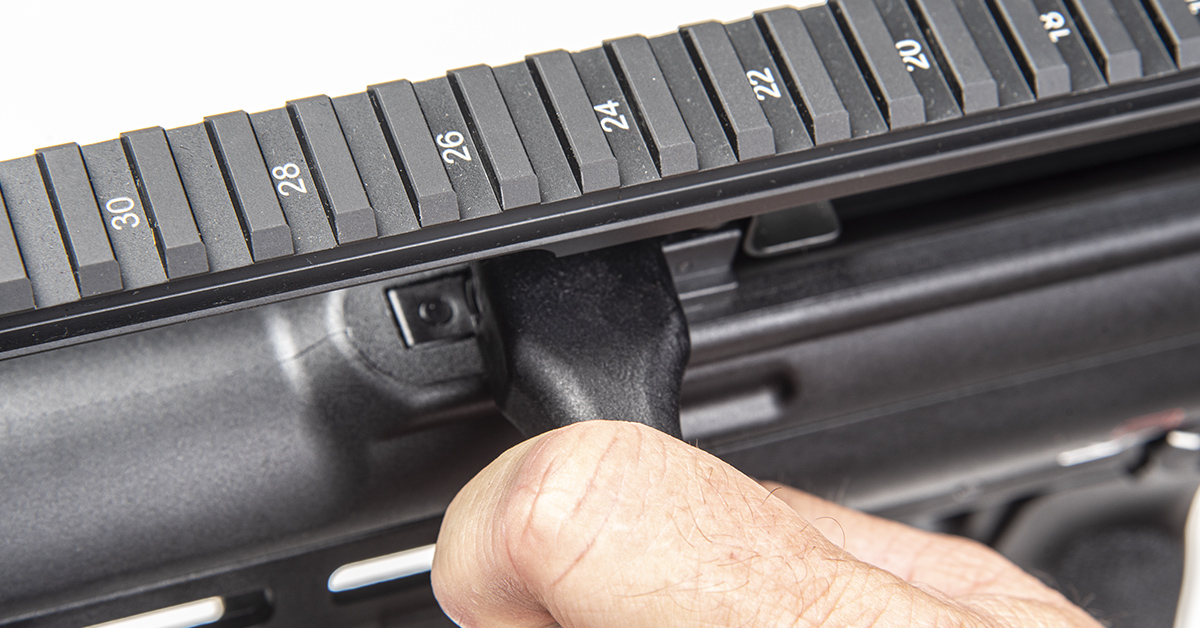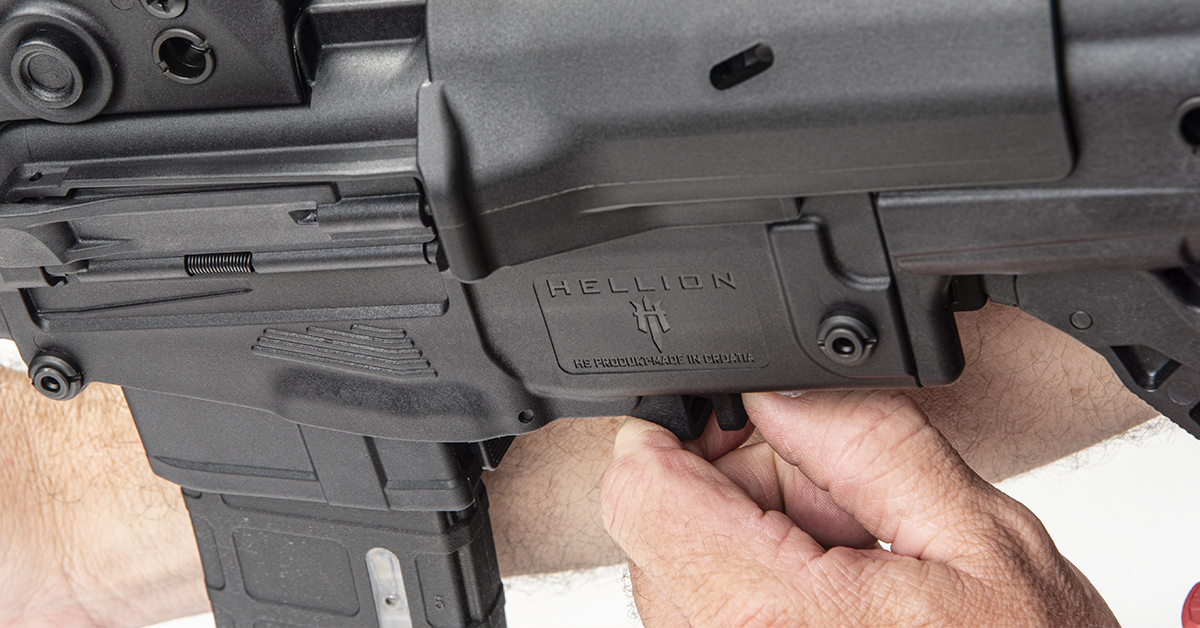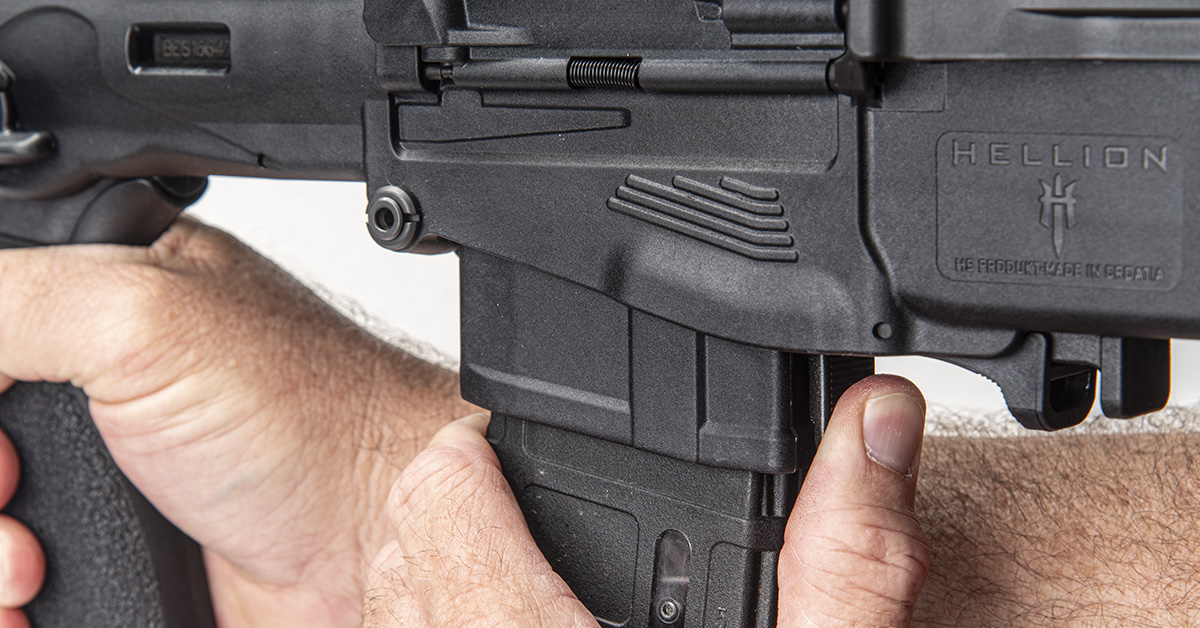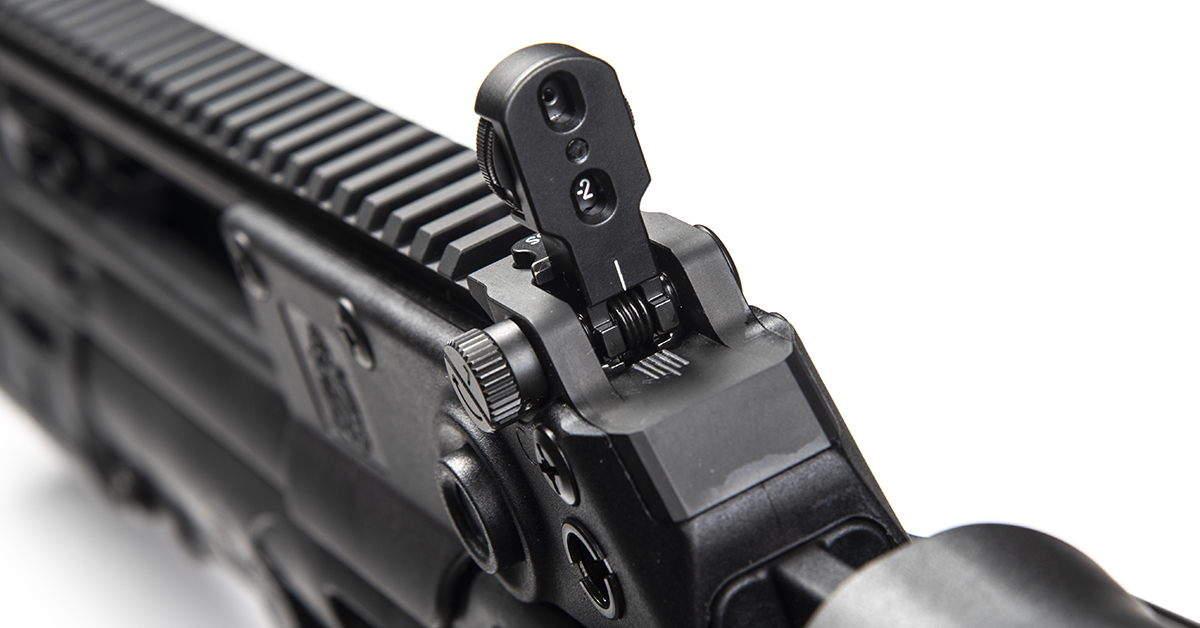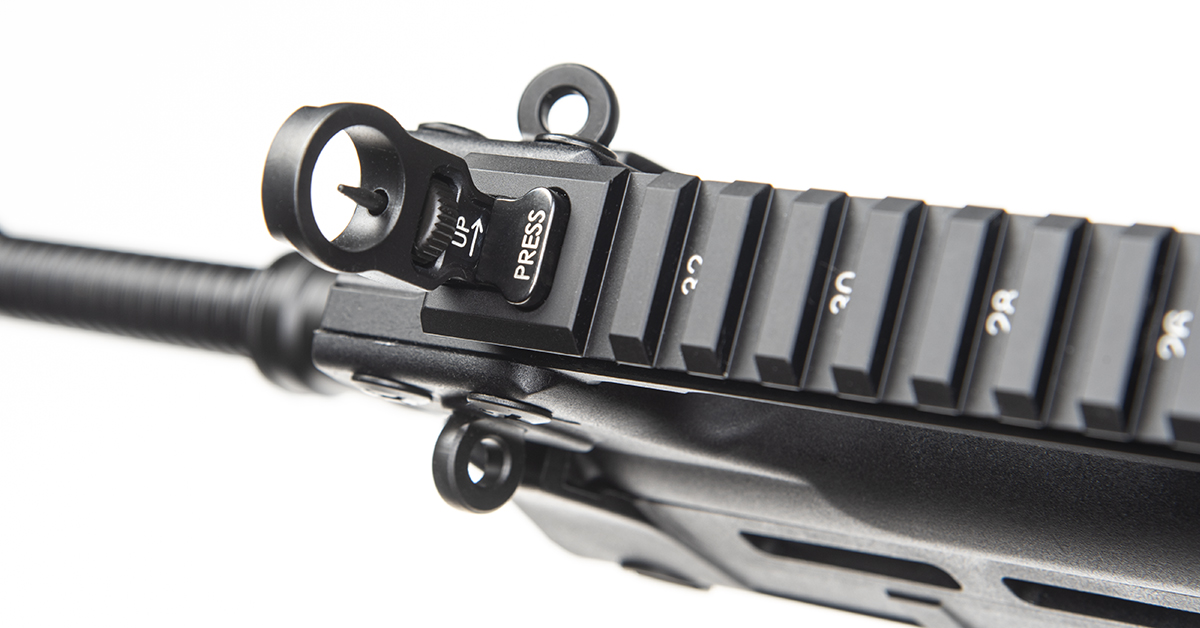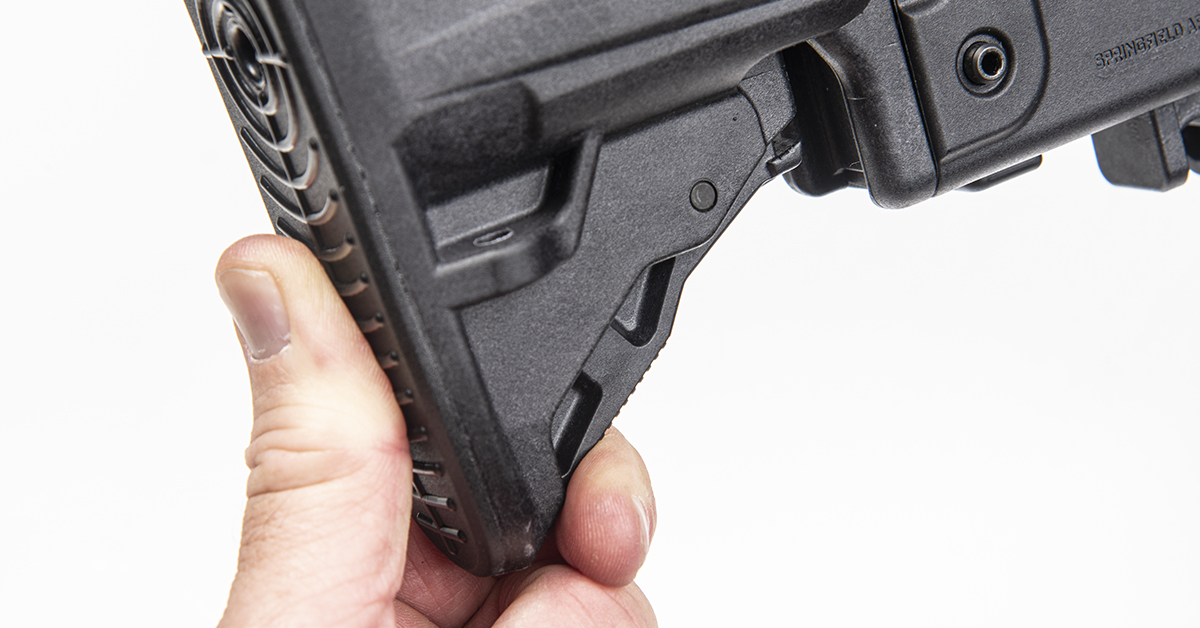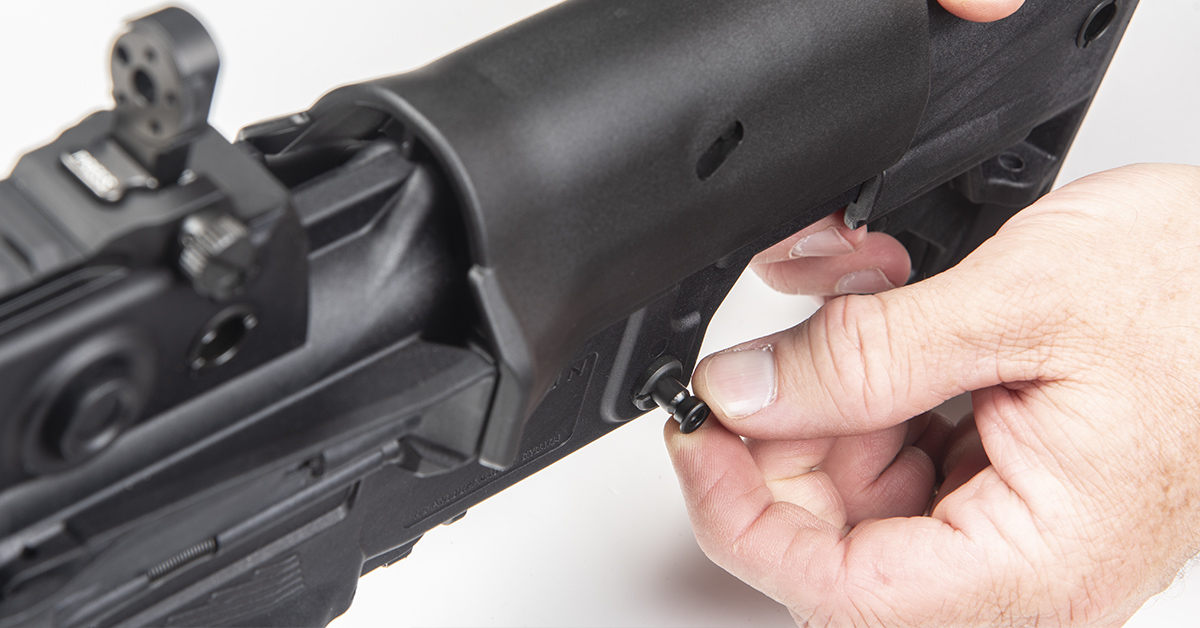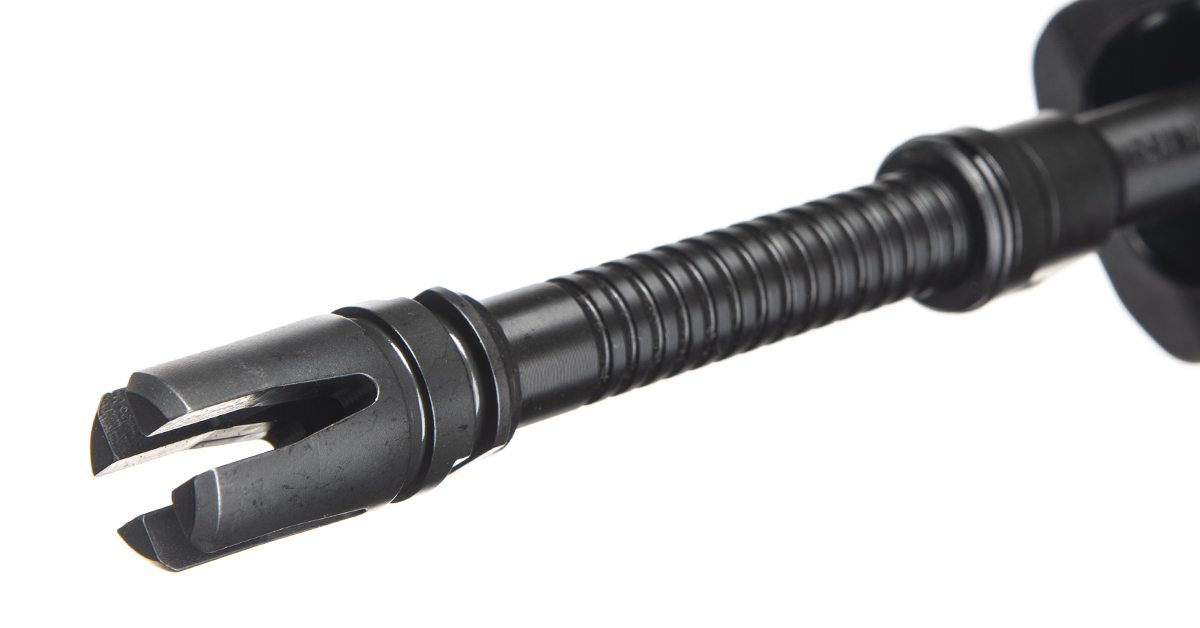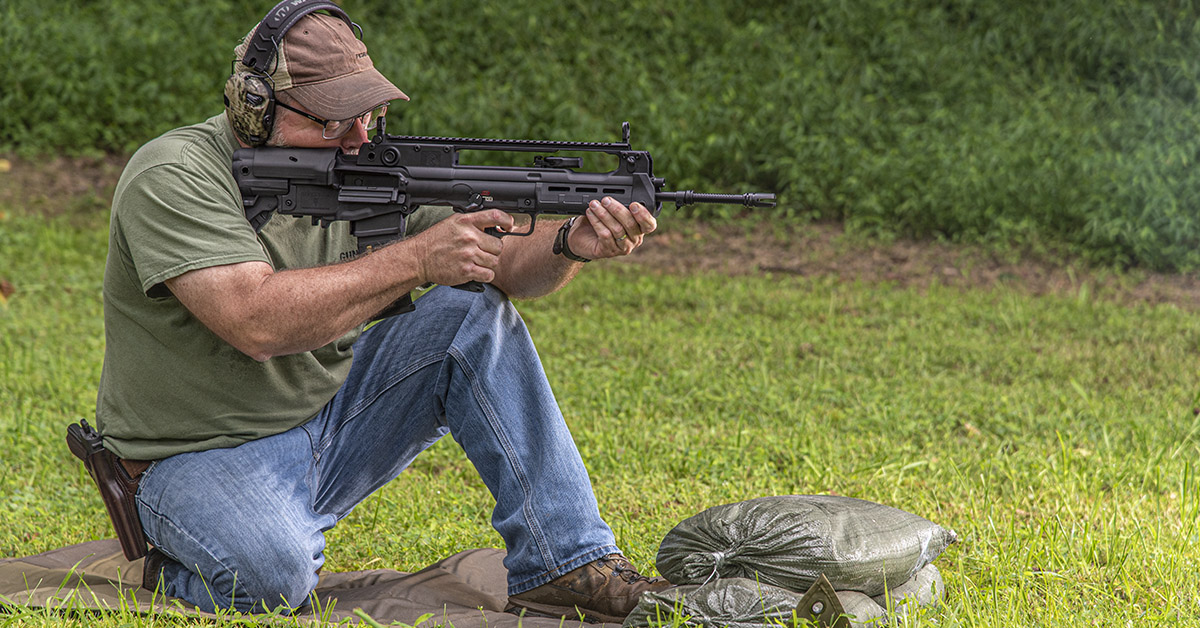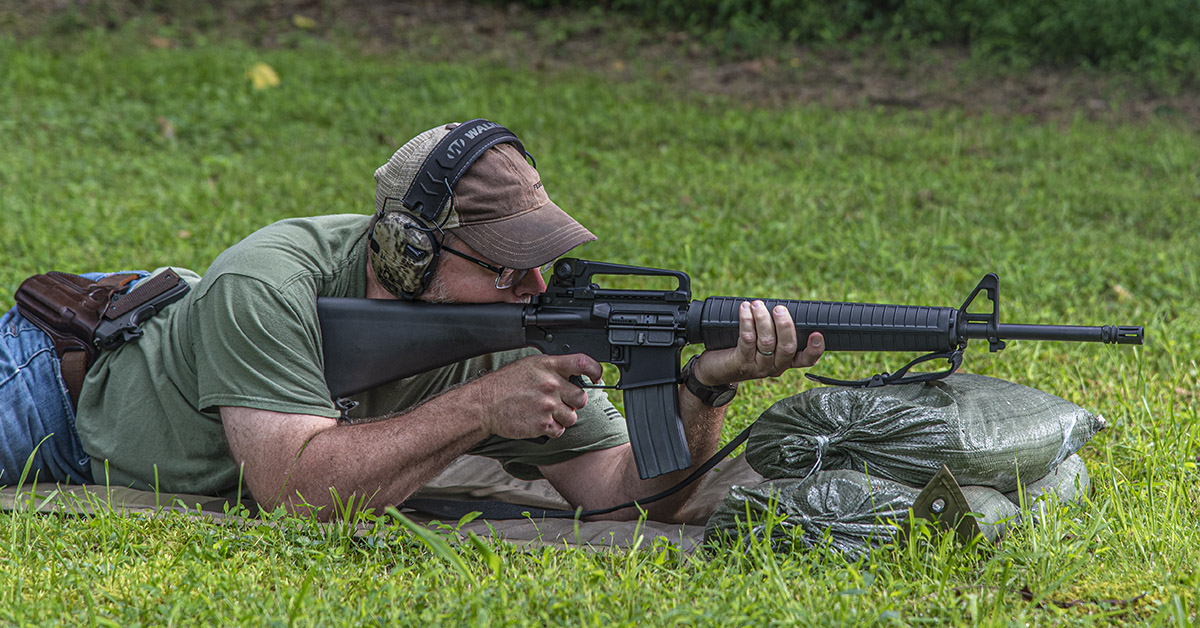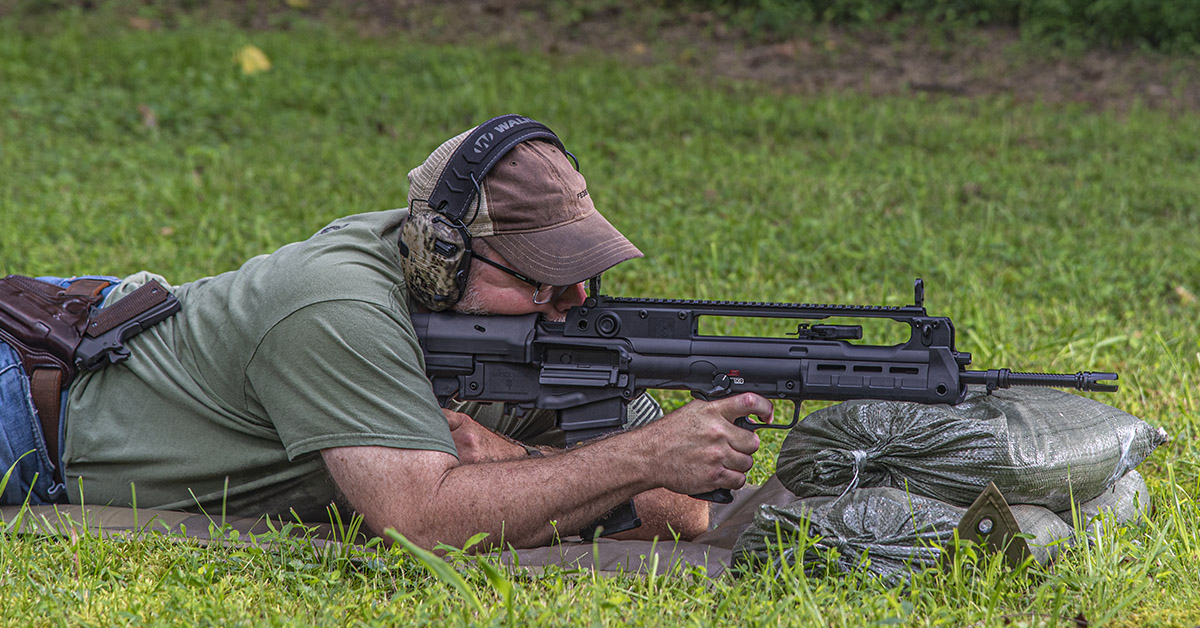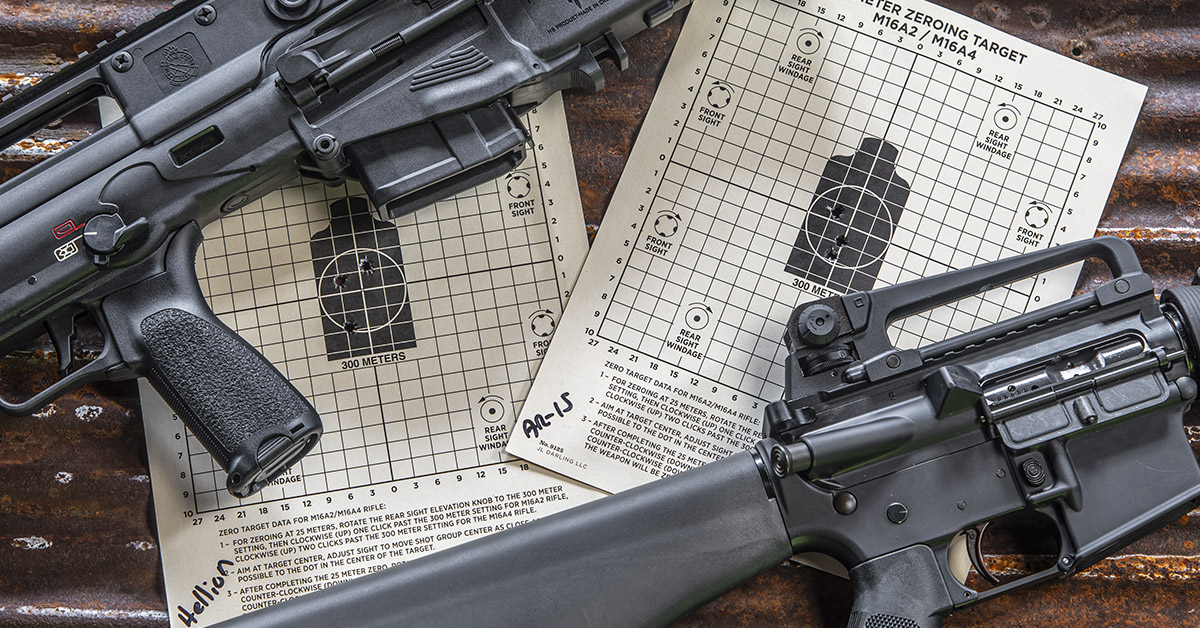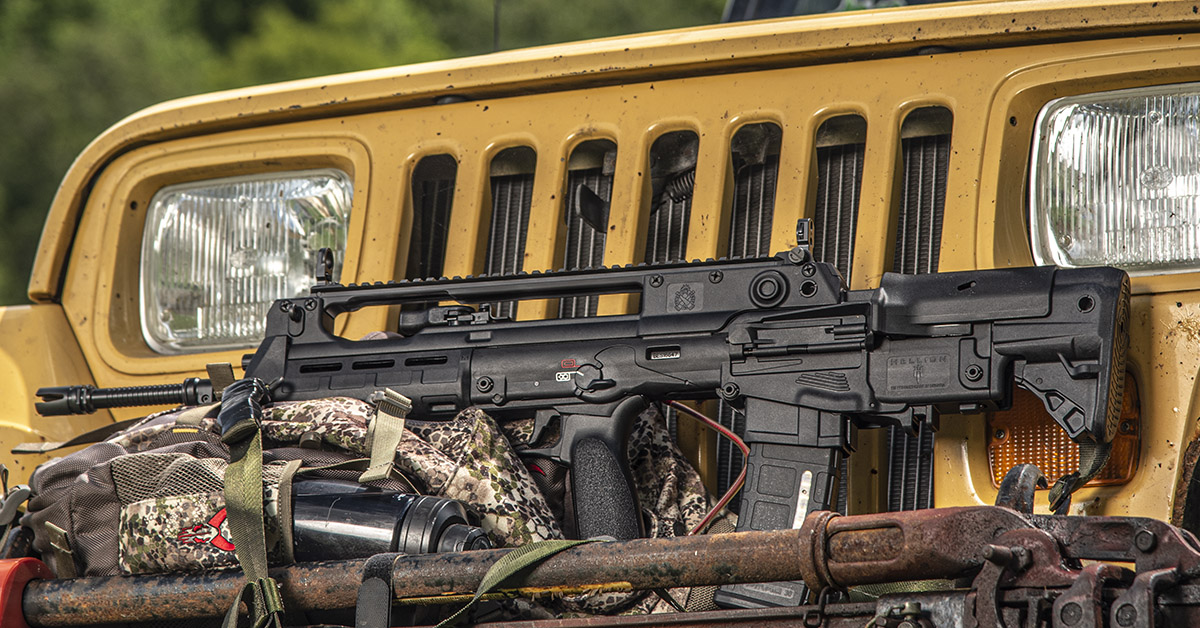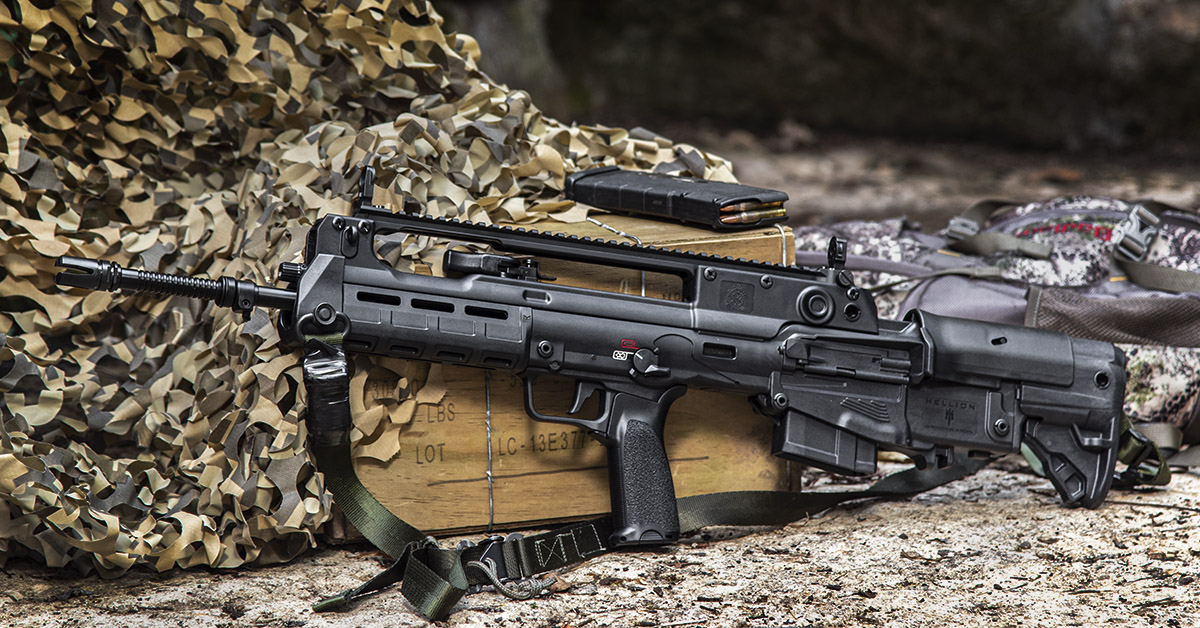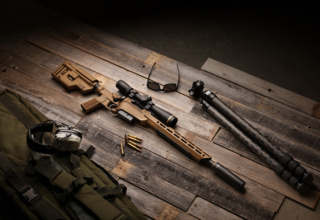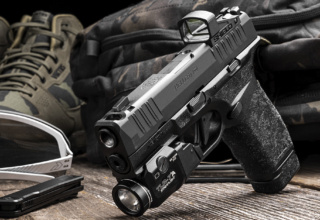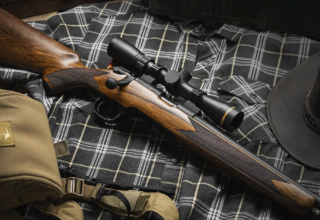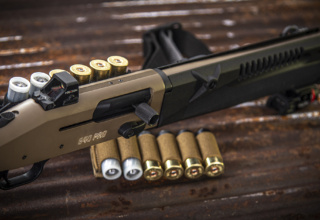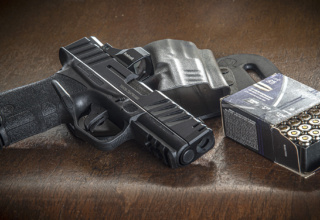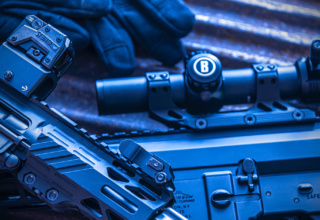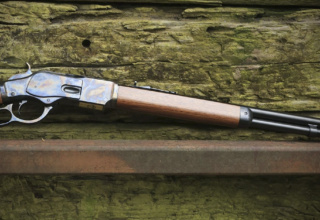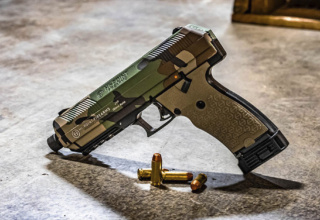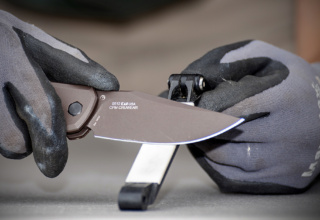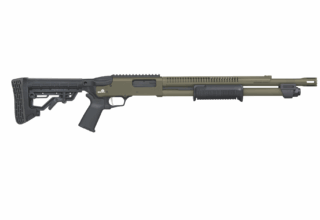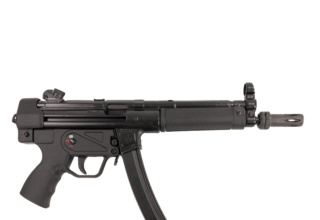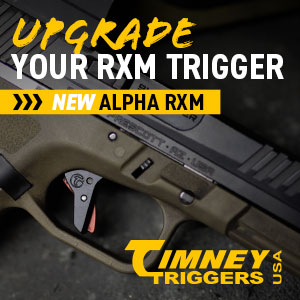Springfield expands its Hellion bullpup lineup with an 18- and a 20-inch model. Wonder how it compares to the familiar AR-15? Here you go…
by Rob Reaser
Astute members of the firearms enthusiast community may recall that last year Springfield Armory introduced their Hellion bullpup carbine chambered in 5.56 NATO. It is an interesting firearm based directly on the VHS-2 manufactured by HS Produkt for use by the Croation armed forces. Being an import partner of HS Produkt (see the Springfield Hellcat, XD-M Elite, and the just-released Echelon 9mm pistols), it only made sense that the company would bring a variant of this intriguing bullpup to the U.S. market. After all, the gun has proven itself in global combat environments, and the high portability factory of its 28.25-inch overall length answers the call of home defenders and mobile defense practitioners for a no-gimmicks, close-engagement firearm boasting ammunition compatibility with their AR-15s.
While I have not had the opportunity to run the original Hellion, I did get the chance to work with an advance version of the latest Hellion variant in preparation for today’s official launch. That would be the Hellion 20-inch rifle. An 18-inch barrel version also makes its debut today, bringing the Hellion series to three models, differing by barrel length.
Why did I choose the 20-inch? Even though the bullpup concept is nothing new, it is still a relatively novel platform. Given that most Shoot On readers are well-familiar with the AR-15, especially the M16 clone variant with its 20-inch barrel, what better way to get a feel for the Hellion platform than to compare it to what we already know? This is a viable comparison since both firearms are chambered for the 5.56 NATO cartridge and both boast the same barrel length, so the ballistics should be similar. All other variables such as accuracy, feedback, and operation can then be fairly weighed one to the other.
Before we get into that, let’s take a closer look at the Hellion.
As you can see, the Hellion is strikingly different from the AR platform. Here is the rifle field-stripped: (1) carry handle, which incorporates the Picatinny rail, sights, and charging handle assemblies; (2) bolt carrier/guide rod assembly (3) barreled action/receiver assembly; (4) trigger module; (5) buttstock, which integrates the recoil spring and guide rod assembly along with the locking bolt block; (6) magazine well; and (7) handguard.
A gas piston system, positioned toward the front of the barrel, works with the bolt carrier/guide rod assembly to control the cycle of operation. This is a short-stroke design that incorporates a gas block regulator that can be set for either normal or suppressed fire.
The bolt sits low in the carrier beneath the guide rod. It is a familiar locking lug design with an incorporated extractor and ejector system similar to the AR-15 bolt.
Another big difference between this system and the AR-15 is that cartridge ejection is ambidextrous. Identical ejection ports/covers are located on the left and right side of the receiver. The Hellion comes with its bolt orientated to eject through the right side. Left-handers need only remove the bolt from the carrier, rotate it, and reorient the cam key to have the empty cartridges eject out the left side.
The safety selector is also ambidextrous, with a lever on both the left (for right-hand shooters) and the right side (left-hand shooters).
The charging handle lever is spring-loaded. In its at-rest state, the lever is perpendicular to the barrel, so it is out of the way to prevent snagging or damage from accidental bumps. It can be pivoted to either the right or left side for ambidextrous operation when it is time to charge the rifle.
The Hellion’s bolt catch release is in a radically different position than that of the AR-15, located behind the mag well at the bottom of the receiver. Once you get used to its position, it is easy enough to work. Just pull back on the release crank and the bolt jumps to its locked position.
The AR-15 has the clear advantage over the Hellion in the fast-mag-swap category. The mag release lever is located directly behind the mag well, much like that of an AKM. Releasing the mag requires first moving your support hand from the handguard to the release lever, dropping the mag, and then grabbing and inserting a new mag. The release button position on the AR, though, means you can release the mag with your grip hand while simultaneously reaching for your replacement mag with your support hand.
While the Hellion’s full-length top rail offers ample room for the optic of your choice — conventional scope, LPVO, or red dot — it does come with sturdy flip-up sights. The rear sight includes five apertures and a drum to adjust for windage. One click moves bullet impact left or right by 1/2 inch at 100 yards. The apertures are range-adjusted, with numbers (0-1, 2, 3, 4, and 5) denoting range in meters (e.g., “4” = 400 meters). This differs from A2/A4 style AR-15 sights that use a drum to raise the rear sight to range.
The front sight is used to adjust elevation, with 1/4-turn of the drum moving the point of impact 2 inches at 100 yards. The sight post is thin and tapered compared to the AR-15’s traditional A2 front sight post. Some shooters may find this configuration a bit more to their liking since it provides a slightly more precise sight picture. Others, who are more dialed in to the A2 sight, may disagree.
The Hellion stock is…abbreviated. As far as adjustability goes, there are five positions; however, total adjustability is a little more than an inch. And that is fine because unless you have exceptionally long arms, you’ll likely be shooting with the stock in its collapsed position. Such is the case when your firing hand grip is way up front, as it is with a bullpup configuration.
Disassembly of the Hellion for cleaning is completely toolless. Retaining pins similar to an AR’s pivot and takedown pins secure the primary components. Push them out and remove the subassemblies.
Finally, the Hellion 20-inch model tested comes with ribbing behind the muzzle as well as a bayonet lug. These little extras mirror the VHS-D2 designated marksman rifle.
Hellion vs. AR-15
As mentioned earlier, I chose the 20-inch-barrel version of the Hellion to give more of an apples-to-apples comparison with an AR-15 rifle. This had more to do with evaluating accuracy using a 25-meter zero target and open sights, but keeping the barrel lengths the same also hints at any perceived differences in felt recoil and report. For the test, I used Winchester-manufactured M193 55-grain ammo.
If you are accustomed to the AR-15, the Hellion is going to take some getting used to. For starters, the firing hand grip is well forward that of the AR. It feels quite awkward at first, but after a bit of time behind the trigger, you get used to it. As far as the operational controls go, everything is different except for the safety selector, which is positioned right above the firing hand thumb, where it should be.
One area where I struggled with the Hellion was getting a consistent head position. The rifle offers a comfortable and natural cheek weld and eye alignment with the sights, but I am trained on the AR platform to put the tip of my nose against the charging handle for consistency. The Hellion offers no such reference point. That didn’t seem to make a difference in my shooting, but its absence made me feel like my head was “floating” behind the sights.
After establishing a feel for the Hellion, it was time to gauge its accuracy against my AR-15 rifle. Shooting prone supported and unsupported, I verified the 25-meter zero using the standard military 25-meter zeroing target.
Moving to the Hellion, I managed to zero the rifle without expending too much ammo, and quickly got the point of impact within the silhouette’s target ring.
The above group sizes were typical for both rifles, with the Hellion shooting just a wee bit wider dispersion than the AR. This surprised me because I anticipated the Hellion’s group sizes to be even larger. Why?
First, the Hellion has a significantly shorter sight radius (distance between front and rear sights): 14 inches versus 20 inches for the AR. The longer the sight radius the more precise the sight alignment. Second, the Hellion is about seven inches shorter in overall length than the AR rifle. Same deal. Minor movements are magnified with shorter platforms. Third…and this is the biggie…as with any bullpup configuration, the trigger is, as the cool kids say, what it is.
In a bullpup, the barrel is moved deep into the stock area. This requires the trigger group to also be moved way back behind the magazine. The problem is the trigger shoe must still be forward of the grip. That massive separation between the trigger shoe and the trigger/hammer assembly demands a long trigger bar. Suffice to say, all that linkage makes for a less-than-crisp trigger action. That’s not a knock on the Hellion — it is just the nature of the beast.
Yet despite the long pull and mushy feel, the Hellion’s trigger performance didn’t have the kind of impact on accuracy potential that I expected. Yes, you must carefully manage your pull and breathing technique and try to settle the rifle into a natural point of aim, but with work, good results happen.
I can say that the Hellion is a tad harsher to shoot compared to the AR-15 rifle, with an uptick in felt recoil. Nothing major, but you know it’s there. Ditto for the report; slightly louder yet of no practical consequence.
While the Springfield Hellion may share many similarities to the AR-15, including magazine compatibility, this is no AR — and you shouldn’t expect it to be. Whether you opt for the original 16-inch-barrel variant or the newly introduced 18- or 20-inch model, this is a platform that is well-sized for home or mobile defense and delivers the accuracy you would demand in a defensive firearm.
Springfield Hellion 20-inch Rifle Specifications
- CALIBER: 5.56x45mm NATO (.223 Rem.)
- COLOR: black
- BARREL: 20″ CMV w/bayonet lug, Melonite®, 1:7
- FRONT SIGHT: integrated flip-up, elevation adjustable
- REAR SIGHT: integrated flip-up w/5-position aperture, windage adjustable
- BOLT CARRIER GROUP: proprietary, Melonite®
- GAS SYSTEM: 2-position adjustable, short-stroke piston
- HANDGUARD: polymer, M-Lok®
- STOCK: 5-position adjustable w/cheek riser
- MUZZLE DEVICE: 4-prong flash hider
- CHARGING HANDLE: ambidextrous, non-reciprocating
- SAFETY SWITCH: ambidextrous
- GRIP: BCMGunfighter™ Mod 3
- MAGAZINES: (1) 30-round Magpul PMAG Gen M3
- WEIGHT: 8 lbs. 6 oz.
- LENGTH: 32.25″ – 33.75″
- MSRP: $2,031

